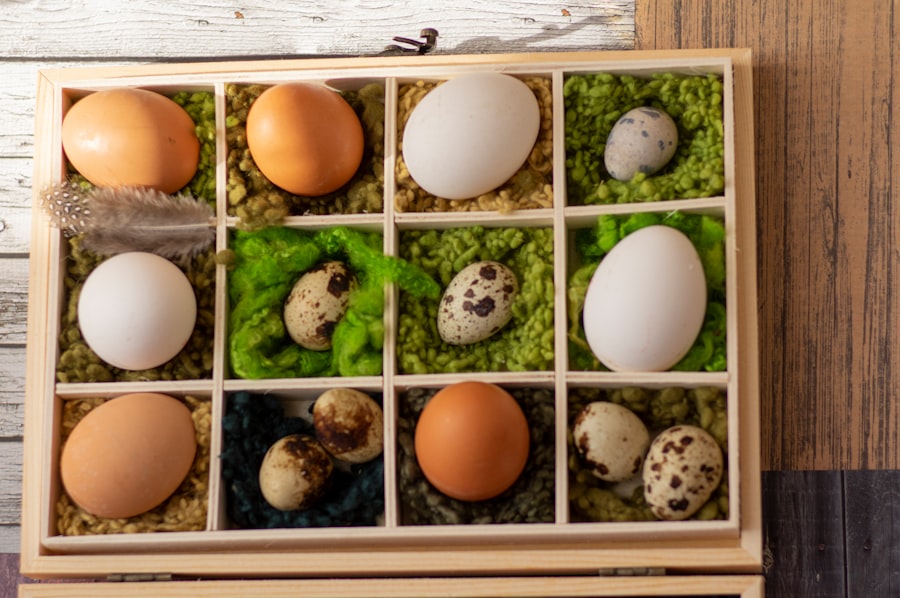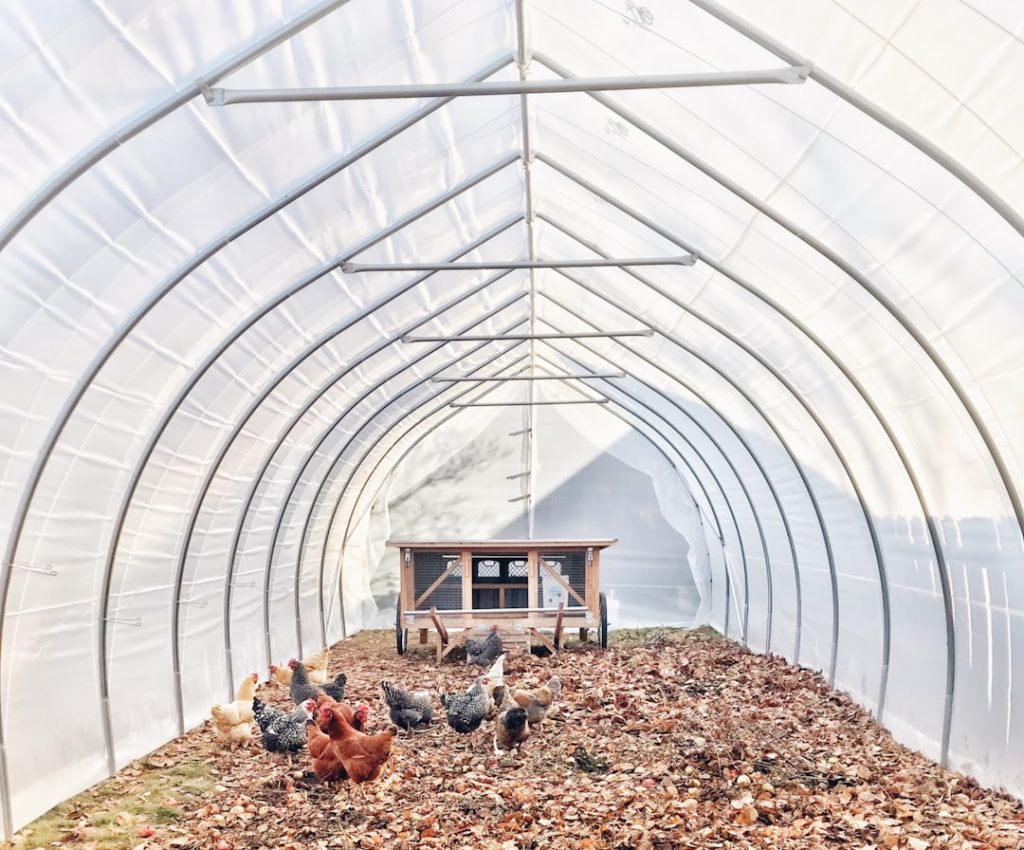Introducing chickens to a new coop is a critical process in poultry management. This transition may occur when upgrading to a larger structure, relocating the flock, or integrating new birds into an existing group. A new coop offers chickens improved living conditions, including increased space and a fresh environment.
To ensure the well-being of the flock, it is crucial to implement a gradual and carefully planned introduction. This approach minimizes stress and allows the birds to acclimate to their new surroundings. Successful integration involves following specific steps and closely observing the chickens’ behavior throughout the process.
By adhering to best practices, poultry keepers can facilitate a smooth transition and promote the health and productivity of their flock in the new coop.
Table of Contents
- 1 Acclimating chickens to the new coop
- 2 Monitoring chicken behavior in the new coop
- 3 Ensuring safety and security in the new coop
- 4 Providing adequate space and resources in the new coop
- 5 Gradually increasing time spent in the new coop
- 6 Assessing when chickens are ready to stay in the new coop full-time
- 7 FAQs
- 7.1 How long should chickens be kept in a new coop?
- 7.2 Why is it important to keep chickens in a new coop for a certain period of time?
- 7.3 What should be considered when determining how long to keep chickens in a new coop?
- 7.4 What are some signs that chickens have acclimated to their new coop?
- 7.5 Are there any exceptions to the recommended time frame for keeping chickens in a new coop?
Key Takeaways
- Introduce chickens to the new coop gradually to reduce stress and anxiety
- Monitor chicken behavior closely to ensure they are comfortable and adjusting well to the new environment
- Ensure the coop is secure and safe from predators to protect the chickens
- Provide adequate space, nesting boxes, and resources for the chickens to thrive in the new coop
- Gradually increase the time spent in the new coop to allow the chickens to acclimate at their own pace
- Assess the chickens’ behavior and comfort level to determine when they are ready to stay in the new coop full-time
Acclimating chickens to the new coop
Gradual Introduction to the New Coop
When introducing chickens to a new coop, it is essential to acclimate them gradually to their new surroundings. Start by allowing them to explore the outside of the coop during the day while keeping them in their familiar coop at night. This will help them become familiar with the new coop without feeling overwhelmed.
Creating a Comfortable Environment
You can also place some of their favorite treats or toys inside the new coop to encourage them to explore and feel comfortable in their new space. Additionally, consider placing some of their old bedding or nesting material in the new coop to provide a sense of familiarity and comfort.
Increasing Time in the New Coop
Another way to acclimate chickens to a new coop is by gradually increasing the amount of time they spend in the new space. Start by allowing them to spend short periods of time in the new coop during the day, gradually increasing the duration as they become more comfortable. This will help them adjust to the new environment at their own pace and reduce any feelings of fear or anxiety.
Providing Reassurance and Comfort
Additionally, consider spending time with your chickens in the new coop, providing them with reassurance and comfort as they explore their new surroundings. By taking these gradual steps, you can help your chickens feel more at ease in their new coop and ensure a successful transition.
Monitoring chicken behavior in the new coop

Once your chickens have been introduced to the new coop, it is important to monitor their behavior closely to ensure they are adjusting well. Keep an eye on how they interact with each other, their eating and drinking habits, and their overall demeanor. It is normal for chickens to take some time to adjust to a new environment, so be patient and observant as they settle into their new home.
Look for signs of stress or discomfort, such as excessive pecking or aggression, and take steps to address any issues that may arise. Additionally, pay attention to how your chickens use the space in the new coop. Are they exploring all areas of the coop, including the nesting boxes and perches?
Are they finding their way to the food and water sources easily? Observing their behavior will help you make any necessary adjustments to ensure they have everything they need in their new environment. By monitoring your chickens’ behavior in the new coop, you can address any concerns early on and help them feel more comfortable and secure in their new home.
Ensuring safety and security in the new coop
Safety and security are paramount when introducing chickens to a new coop. Before moving your chickens into the new space, thoroughly inspect the coop for any potential hazards or weaknesses. Check for gaps or openings where predators could enter, ensure that all doors and latches are secure, and make any necessary repairs or modifications to keep your chickens safe.
Additionally, consider installing predator-proof fencing around the perimeter of the coop to provide an extra layer of protection. Inside the coop, provide ample roosting space and nesting boxes for your chickens to feel secure and comfortable. Ensure that there are no sharp edges or protruding nails that could cause injury, and remove any toxic plants or materials from the area.
By creating a safe and secure environment for your chickens, you can help them feel at ease in their new coop and minimize any potential risks or dangers.
Providing adequate space and resources in the new coop
Adequate space and resources are essential for ensuring that your chickens thrive in their new coop. Make sure that there is enough room for all of your chickens to move around comfortably, with plenty of space for roosting, nesting, and dust bathing. Provide multiple feeding and watering stations to prevent overcrowding and competition for resources.
Additionally, consider adding enrichment activities such as perches, toys, and scratching areas to keep your chickens mentally and physically stimulated. It is also important to provide proper ventilation and lighting in the new coop. Good airflow will help regulate temperature and humidity levels, while natural or artificial lighting will help maintain a consistent day-night cycle for your chickens.
By providing adequate space and resources in the new coop, you can ensure that your chickens have everything they need to stay healthy and happy in their new environment.
Gradually increasing time spent in the new coop

Gradual Introduction to the New Space
As your chickens become more comfortable in the new coop, gradually increase the amount of time they spend in the space. Start by allowing them to spend short periods of time in the new coop during the day, gradually increasing the duration as they become more accustomed to their surroundings. This will help them adjust at their own pace and reduce any feelings of fear or anxiety.
Positive Reinforcement Techniques
You can also encourage your chickens to spend more time in the new coop by providing them with treats or rewards for going inside. This positive reinforcement will help them associate the new space with positive experiences and feel more comfortable spending time there. Additionally, consider spending time with your chickens in the new coop, providing them with reassurance and comfort as they explore their new surroundings.
Achieving Confidence and Comfort
By gradually increasing the time spent in the new coop, you can help your chickens feel more at ease and confident in their new home.
Assessing when chickens are ready to stay in the new coop full-time
After acclimating your chickens to the new coop and monitoring their behavior, it is important to assess when they are ready to stay in the new space full-time. Look for signs that they are comfortable and confident in their surroundings, such as exploring all areas of the coop, using the nesting boxes and perches, and readily accessing food and water sources. Additionally, observe how they interact with each other and whether there are any signs of stress or aggression.
Once you feel confident that your chickens are ready, consider keeping them in the new coop overnight for a few nights to see how they adjust. Monitor their behavior closely during this time to ensure they are settling in well and not experiencing any issues. If all goes smoothly, you can gradually transition them to staying in the new coop full-time.
However, if you notice any signs of distress or discomfort, consider taking a step back and allowing them more time to acclimate before trying again. In conclusion, introducing a new coop to your chickens is an important process that requires patience, observation, and careful planning. By acclimating your chickens gradually, monitoring their behavior closely, ensuring safety and security, providing adequate space and resources, gradually increasing time spent in the new coop, and assessing when they are ready to stay full-time, you can help your chickens adjust successfully to their new environment.
With proper care and attention, your chickens will thrive in their new coop and enjoy all of its benefits for years to come.
If you’re wondering how long to keep chickens in a new coop, you may also be interested in learning about the best vegetables for quails to eat. Check out this article to discover which vegetables are safe and nutritious for your quail to enjoy.
FAQs
How long should chickens be kept in a new coop?
Chickens should be kept in a new coop for at least 24-48 hours to allow them to acclimate to their new surroundings.
Why is it important to keep chickens in a new coop for a certain period of time?
Keeping chickens in a new coop for a specific period of time allows them to become familiar with their new environment, reducing stress and the likelihood of them trying to escape.
What should be considered when determining how long to keep chickens in a new coop?
Factors such as the age and breed of the chickens, the size and layout of the new coop, and the overall temperament of the flock should be considered when determining how long to keep chickens in a new coop.
What are some signs that chickens have acclimated to their new coop?
Signs that chickens have acclimated to their new coop include exploring the space, eating and drinking normally, and exhibiting calm and relaxed behavior.
Are there any exceptions to the recommended time frame for keeping chickens in a new coop?
In some cases, chickens may need more or less time to acclimate to a new coop based on their individual personalities and the specific circumstances of the move. It’s important to observe the chickens closely and adjust the timeline as needed.
Meet Walter, the feathered-friend fanatic of Florida! Nestled in the sunshine state, Walter struts through life with his feathered companions, clucking his way to happiness. With a coop that’s fancier than a five-star hotel, he’s the Don Juan of the chicken world. When he’s not teaching his hens to do the cha-cha, you’ll find him in a heated debate with his prized rooster, Sir Clucks-a-Lot. Walter’s poultry passion is no yolk; he’s the sunny-side-up guy you never knew you needed in your flock of friends!







